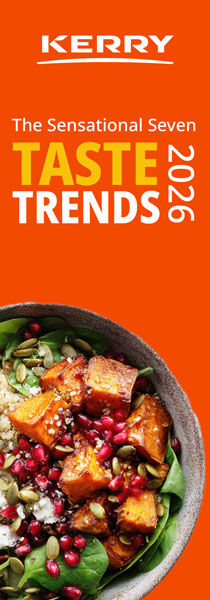German consumers prefer regional meat but want sustainability and quality, flags Vion survey
15 Aug 2024 --- More than a third (38%) of German consumers prefer to buy meat that comes from the country, with most looking for three criteria — quality, freshness and value for money, according to a survey by Vion Consumer Monitor. However, despite “regionality” being popular, only 61% are willing to pay more for local meat.
More than half of the 4,000 households surveyed agreed that the “already declining” per capita meat consumption is expected to continue in the coming years.
They attributed the decline to health (50%), sustainability (43%), possible tax increases such as an animal welfare levy (40%) and the general price increase (28%).
Ensuring quality
The survey, conducted by Consumer Panel Services GfK in March-April 2024, indicates that only 10% of Germans agree with the statement that the expected quality standards, such as hygiene and animal welfare, are higher in large slaughterhouses than in small ones.
 “Good quality” is the most important purchasing criterion for German consumers.Yet, it is precisely these establishments that are constantly driving up industry standards through strict controls and their own efforts, notes the company.
“Good quality” is the most important purchasing criterion for German consumers.Yet, it is precisely these establishments that are constantly driving up industry standards through strict controls and their own efforts, notes the company.

“The public’s trust in meat as a natural food and its right to exist as part of a balanced diet is returning,” says Wilhelm Habres, director of National Sales at Vion Germany.
“We must now build on this as an entire industry with the binding support of politicians and actively work to break down prejudices in society. We practice regionality, animal welfare and food safety at each of our locations.”
The survey found “good quality” as the most important purchasing criterion for all meat-buying German consumers.
Additionally, they also want transparency, with 65% of all households preferring meat that has been produced sustainably.
Meanwhile, for 60% of Germans, information on animal husbandry (e.g. more space, access to the outdoors) when buying meat is important.
Additionally, freshness of the products, a good price-performance ratio and good selection from the region also rank high on consumers’ lists of purchasing criteria.
Regionality megatrend
The survey also indicates that meat from Germany is in demand among almost 40% of Germans and that they even “consciously avoid imported meat.”
This aligns with the “regionality megatrend,” which received 75% approval in 2024.
According to the company, regionality plays an above-average role in all federal states and has ranked first among the four megatrends in meat purchasing — animal welfare, transparency, regionality and sustainability — since 2009.
 The perception of meat as an indispensable part of the diet has risen to 64%, says the survey.However, at 80%, the trend is most popular in southern federal states such as Baden-Württemberg and Rhineland-Palatinate. Meanwhile, households in Bavaria (79%) and Thuringia (70%) attach the least importance to the regional origin of meat products.
The perception of meat as an indispensable part of the diet has risen to 64%, says the survey.However, at 80%, the trend is most popular in southern federal states such as Baden-Württemberg and Rhineland-Palatinate. Meanwhile, households in Bavaria (79%) and Thuringia (70%) attach the least importance to the regional origin of meat products.
An indispensable commodity?
Vion says meat is and remains indispensable for nutrition.
Some 68% of those surveyed still want to eat meat regularly in three years’ time.
“After the image of the animal-based foodstuff had just come out of its slump in the previous year, things have been looking up since then. Overall, the perception of meat as an indispensable part of the diet has risen to 64%.” This is the highest figure since 2018, says the meat supplier.
In 2024, 55% of Germans surveyed by Vion Consumer Monitor agreed that eating meat is healthy, while in 2022, this number was 48%.
















